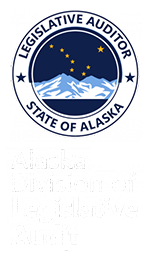| SUMMARY OF: | A Special Report on the Department of Environmental Conservation, Division of Spill Prevention and Response, Oil and Hazardous Substance Release Prevention and Response Fund, March 18, 2008. |
Purpose of the Report
In accordance with Title 24 of the Alaska Statutes and a special request by the Legislative Budget and Audit Committee, we have conducted a performance audit of the Department of Environmental Conservation (DEC), Division of Spill Prevention and Response (Division). Specifically, we were asked to review the expenditures and cost recovery revenues from the Oil and Hazardous Substance Release Prevention and Response Fund (Fund).
Report Conclusions
The conclusions are as follows.
The Report Conclusions section sets out our findings related to the other audit objectives, as follows:
- all expenditures are not recorded according to activities
- compliance with statutory cost recovery requirements is unclear
- Division is not efficiently and effectively recovering costs
- most expenditures were appropriate
- legal costs need an improved budgeting process
- certain contractual oversight practices are weak
- detailed information on the Fund’s financial activities is incomplete
During the audit we reviewed a $9 million reimbursable services agreement between the Division and the Department of Law for legal services related to two transit pipeline spills on the North Slope. The contract was funded by the Response Account without specific legislative appropriation. It would have been more prudent to follow the established legislative budget process, especially for long-term legal activities.
Findings and Recommendations
- The Division Director should improve the accountability for the Division’s activities and reporting of Fund expenditures.The Division’s current recording and reporting practices provide insufficient detail to adequately evaluate the programs’ activities. The Division is not recording expenditures in a way that allows clear financial reporting for the cleanup and containment costs of each site. The Division should improve its accountability for the use and reporting of the Fund. Improvements should include:
- reviewing and improving its current accounting structure in the State’s accounting system for tracking site and program expenditures;
- recording all site-incurred expenditures to specific sites to provide accurate reporting of the total costs incurred for cleanup and containment of sites;
- evaluating program administration expenditures and ensuring employees are recording personal service time to the appropriate sites and activities;
- reviewing its indirect rate methodology to ensure that the rate reflects the Division’s costs that are not directly charged to sites;
- providing detailed analysis and reporting of its program core activities by site, facility, and region;
- accurately recording state and state lead sites expenditures to the appropriate legislative authorization (i.e. capital appropriations);
- requiring that the Division’s database key fields correlate to the State’s accounting system;
- improving its site and program databases to ensure greater flexibility in responding to information requests posed in a variety of formats; and,
- modifying the Division’s biennial report to also provide information about the programs’ core detailed activities.
- The Division Director should improve the Division’s efficacy in the recovery of state expenditures and implement appropriate regulations.The Division’s current cost recovery system is archaic and cannot produce summary information necessary for appropriate management. The Division should either utilize the reporting features on the State’s accounting system or another cost effective alternative to enhance its collections and reporting process of cost recovery efforts. The Division should also implement regulations to strengthen cost recovery efforts, improve accountability, and fulfill statutory requirements.
- The contract management section manager should take action to improve the review of contractor invoices.

